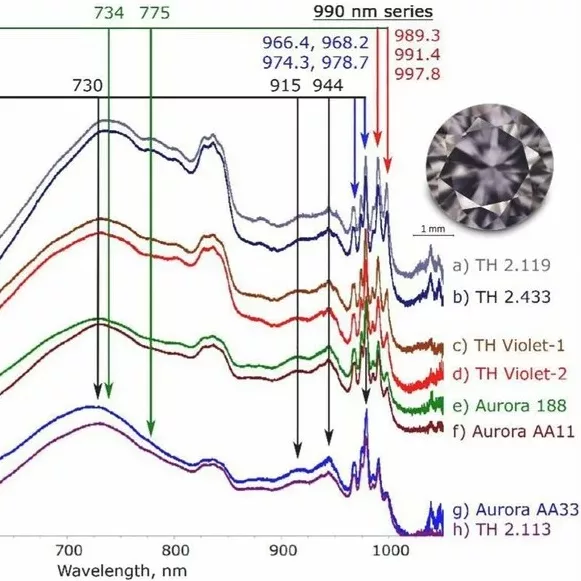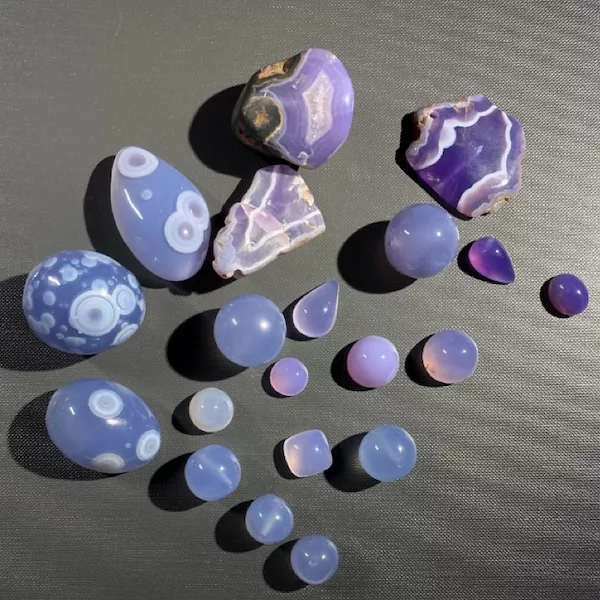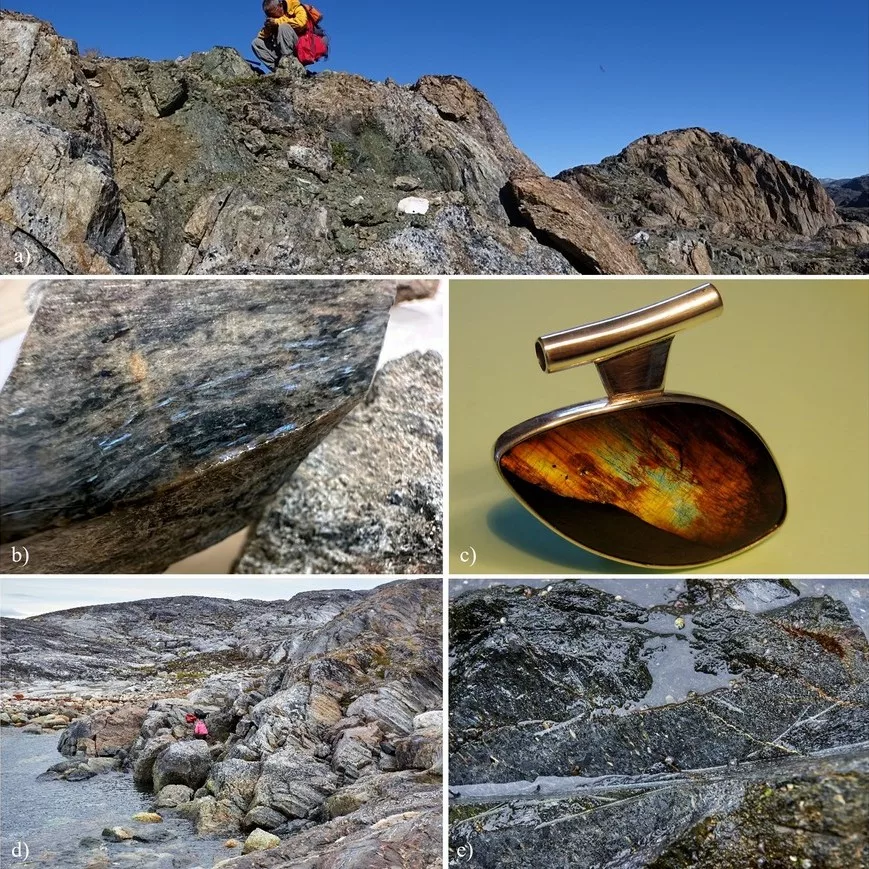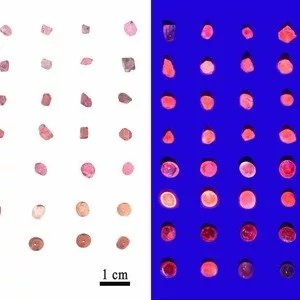Violet Diamonds from Argyle: New Insights into the Cause of their Unique Color
Until its recent closure, the Argyle mine in Australia has been the only source of uniquely colored violet diamonds produced during the 35 years of its operation. These diamonds that are mostly of small sizes – the largest ever recovered weighed 2.83 ct after cutting – are of rather low saturation appear generally grayish and only the best qualities face up truly violet. Caused by the low saturation, to many observers, these diamonds look gray or blue face up, but when comparing them to type IIb blue diamonds, then it becomes obvious, that practically all these Argyle diamonds are violet and not blue. The violet color is unknown for any diamonds from any other deposit, with exception of some ultra rare type IIb blue diamonds that show a violet appearance because of an unusually strong red phosphorescence that is even triggered by daylight.
The color of the Argyle violets is the result of a very complex UV-Vis-NIR absorption spectrum as shown in Figure 1. Since these diamonds are always rich to extremely rich in hydrogen, the color has traditionally been associated with hydrogen defects, without providing any actual evidence for this claim. While nickel has been detected in earlier works (Van der Bogert et al., 2009), a deeper look into the role of nickel in these diamonds has not been realized prior to this present study.
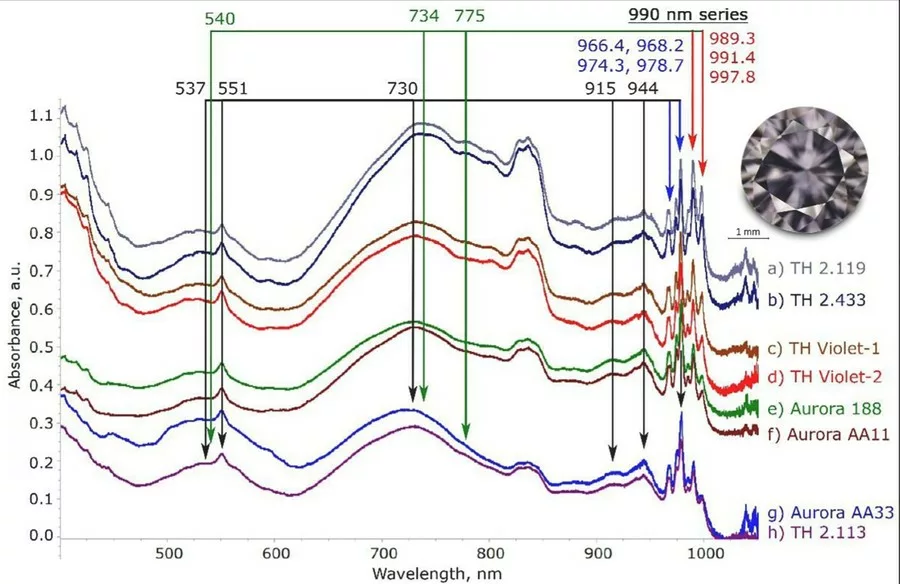
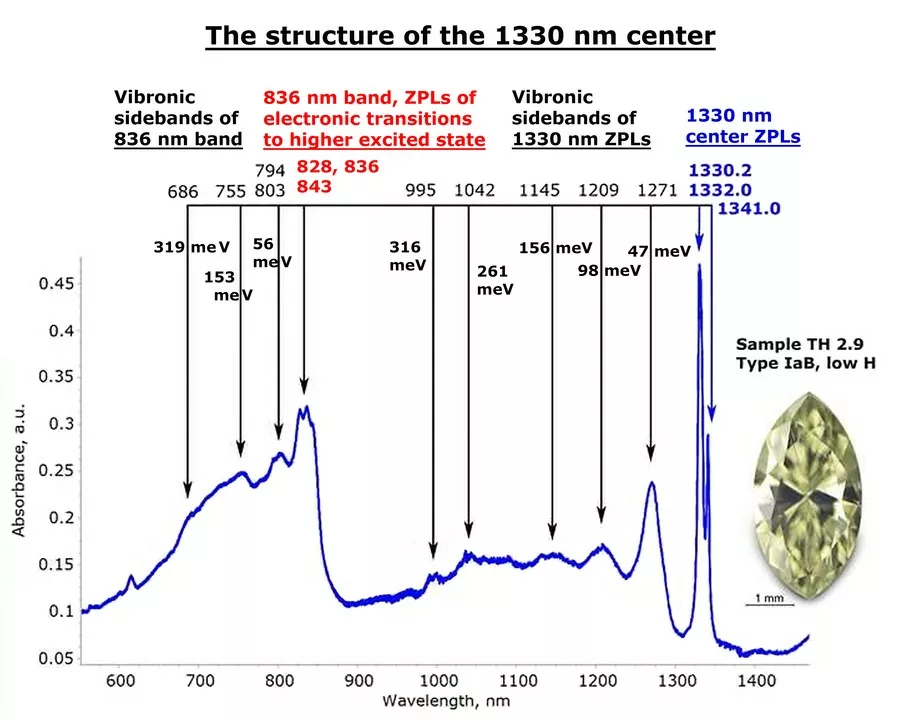
For this study we tested not only violet diamonds but also otherwise colored diamonds that exhibit related absorption characteristics to find an explanation of the unusual UV-VisNIR spectra. Specifically for this study we have developed technology to acquire extended UV-Vis-NIR spectra at 77K, from 240 nm all the way to 2500 nm, as the true shape and structure of absorption bands in the NIR know from FTIR spectra of all violet diamonds appeared to be of particular interest.
The data acquired permitted us to define a series of defects responsible for the violet color of theses diamonds: The 1330 nm center – a very distinct defect with strong ZPLs at 1330.2, 1332.0 and 1341.0 nm and associated absorptions that range all the way to the visible spectral domain (Figure 2).
The 990 nm series – up to 17 ZPLs in the range from 966 to 1001 nm that can be correlated with many of the broad absorptions seen in the UV-Vis-NIR absorption spectra of such violet diamonds. Of these, the ZPLs between 976 and 979 nm were found to correlate with the broad band absorptions at 550 and 735 nm. As the most intense 1330 nm center has been found in diamonds that were practically free of any IR active hydrogen and as its intensity did in no way correlate with the hydrogen absorptions, it was safe to conclude that the defect was not associated with hydrogen. In contrast, the 990 nm series could only be found in diamonds with significant hydrogen, which could mean that hydrogen plays a role in these defects. The common property of all diamonds colored by any of the above-mentioned centers is their richness in nickel: in every diamond that showed any of these absorptions, the PL was dominated by nickel and nickel-nitrogen defects such as S2, S3, NE3 etc.
All data acquired during this study suggests that the color of Argyle violet diamonds is caused by nickel-nitrogen defects, some of which – the 990 nm series – possibly involve hydrogen. Compared to diamonds of olive to brown-yellow to greenish yellow color that exhibit similar UV-Vis-NIR absorption spectra (Hainschwang et al. 2020), the violet diamonds are pure type IaB diamonds, lack N3 center absorption and exhibit stronger ZPLs between 976 to 979 nm – and in consequence stronger broad band absorption at 550 and 735 nm. The combination of these characteristics results in violet color, which may appear gray when the tone is very light.
References:
- Hainschwang, T., Notari, F., Pamies, G., 2020. An in-depth study and classification of brown diamonds, Part II: Brown diamonds with non-deformation-related colour. Minerals, 10(10), 914.
- Van der Bogert, C.H., Smith, C.P., Hainschwang, T., McClure, S., 2009. Gray-to-Grayish Blue and Gray-toGrayish Violet Hydrogen-Rich Diamonds from the Argyle Mine, Australia. Gems & Gemology., 45(1), pp. 20 – 37.

